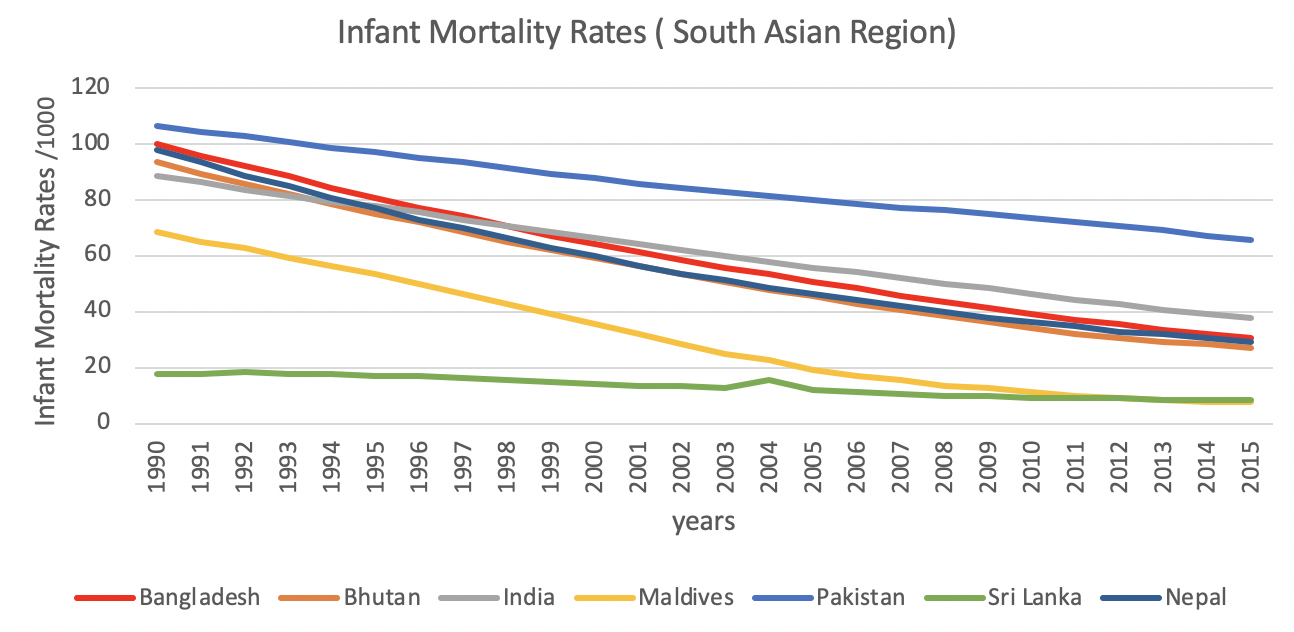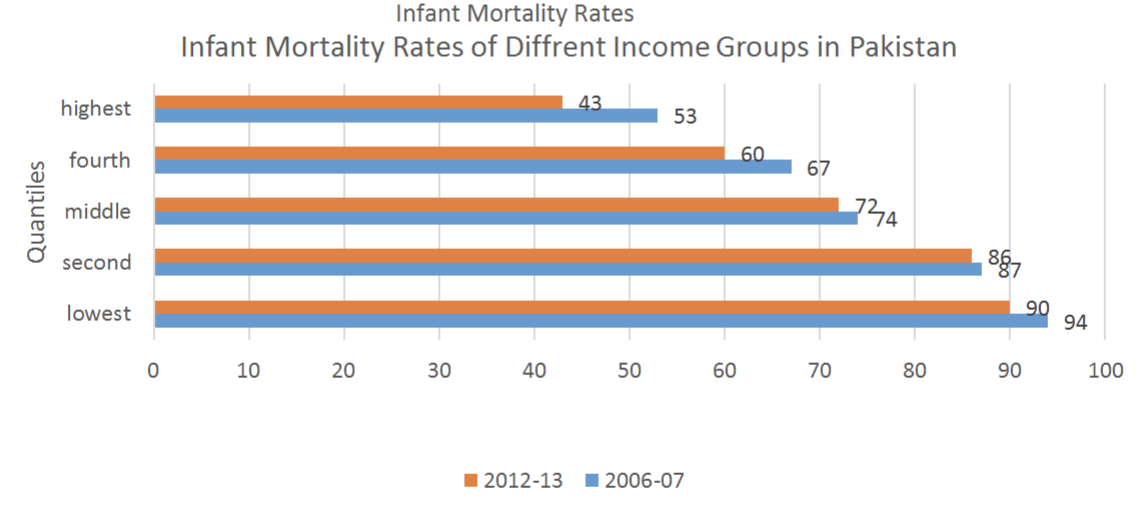 Pakistan’s level of infant mortality remains high despite decreasing over recent years. With Imran Khan vowing to review the county’s strategy on protecting mothers and their babies, Abid Rehman argues that the newly elected Prime Minister doesn’t have to look outside the region for ideas to lower it further.
Pakistan’s level of infant mortality remains high despite decreasing over recent years. With Imran Khan vowing to review the county’s strategy on protecting mothers and their babies, Abid Rehman argues that the newly elected Prime Minister doesn’t have to look outside the region for ideas to lower it further.
 Baby in hospital bed | Credit: Unsplash awpixel
Baby in hospital bed | Credit: Unsplash awpixel
In his maiden speech, Imran Khan, Pakistan’s recently elected Prime Minister, put forward his vision to the country: corruption needs to be rooted out, national debt must be lowered, poverty and malnutrition reduced. But buried deep within these pledges, along with his anti-elitist rhetoric, the former cricket hero committed to the nation that he would “review our thinking” on infant mortality.
Khan’s not wrong to make this review a priority. According to a UNICEF report published a little after his speech, Pakistan has the 31st highest infant mortality rate in the world: 50.40 deaths per 1,000 births. That figure is in stark contrast to babies born in Iceland (where one in 1,000 infants died during childbirth), Singapore (one in 909), Finland (one in 833), and Norway (one in 667).
These high figures are not just confined to Pakistan in South Asia. As a region, South Asia has the second highest levels of infant mortality in the world. Only Sub Saharan Africa has higher rates. Data from the World Bank shows that over a 15-year period, substantial progress in lowering levels of infant mortality has been made around the world. The graph below shows that in 1990 there were only 34 countries whose infant mortality rates lie between a range of zero and ten. By 2015 this number has increased to 75 countries.
 Source: World Bank Database | Graph constructed by author
Source: World Bank Database | Graph constructed by author
But Imran Khan does not have to look outside South Asia for answers of how to bring Pakistan’s infant mortality rate down. Over the last twenty years both the Maldives and Sri Lanka have either maintained a low infant mortality rate (as is the case with Sri Lanka) or dramatically reduced it (as is the case with the Maldives). While in Pakistan there are 50.40 deaths per 1,000 births in Sir Lanka there are 8.21 per 1,000 births, and in the Maldives 21.26 per 1,000 births.
 Source: World Bank Database | Graph constructed by author
Source: World Bank Database | Graph constructed by author
The Maldives
The Maldives has witnessed such a dramatic and sustained drop in their infant mortality rate because between 2005 and 2011 per capita health expenditure in the Maldives increased from US$ 136 to US$ 247. This means that in 2018, social sector expenditure in the archipelago amounts to nearly 50 per cent of the national budget. According to Maldives Human Development Report 2014 by the United Nations Development Programme, the Maldives has maintained almost universal coverage for all vaccines for preventable childhood diseases for nearly two decades.
The same report also explained that the country’s massive reduction in infant mortality was due to the Maldives possessing one of the best doctor-to-population ratios amongst its neighbours and other small island countries. In 2005, there were 379 medical doctors with a doctor-to-population ratio of 1:775, while in 2010 there were 525 doctors with a doctor-to-population ratio of 1:609, making the physician density (per 1000 population) as much as 1.642. In Pakistan over the last decade however, just 0.5-0.8 per cent of its GDP was spent on healthcare. It’s only a tenth of what the World Health Organisation requires the country to spend.
Sri Lanka
Sri Lanka is an unusual case amongst less developed countries in which the level of health is of an exceptionally high quality, particularly in the face of a lack of economic development and low national product per person. In Sri Lanka’s case, the infant mortality rate in 2016 was 70 deaths per 1,000 births, according to the World Bank’s dataset on infant mortality. But thanks to a targeted investment on anti-malaria, family nutrition and immunisation programs, as well as concentrated spending on the supply of clean, piped-water through Sri Lanka’s public health programme, the government reduced the infant mortality rate to 20 deaths in every 1,000 birthday by the 1980’s.
A comprehensive health plan for the country was not the only factor is protecting newborn babies. In the 1980s 37 per cent of women were illiterate. Those figures have transformed to a point where Sri Lanka now has one of the highest literacy rates among developing countries, especially for women where 91.7 per cent of women in the country can read and write. It was this rise in education levels for women that was inextricably linked to a lowering of infant mortality rates in Sir Lanka.
Applying those lessons to Pakistan
Targeting Rural areas
According to Pakistan’s health demographic survey from 2013, the infant mortality rates in the country are 30 per cent higher in rural areas than urban areas. Therefore, Pakistan’s new Prime Minister must target health and social care spending in the rural, underdeveloped and remote areas of the country. Healthcare facilities, skilled birth attendants, and health infrastructure, like in the case of the Maldives, should be targeted first.
 Source: Pakistan Health Demographic Surveys 1990, 2007 & 2013 | Graph constructed by author
Source: Pakistan Health Demographic Surveys 1990, 2007 & 2013 | Graph constructed by author
Targeted Education Spending
Imran Khan must also invest in programs that offer opportunities for women to learn about the risks associated with childbirth. In Pakistan, the female literacy rate is currently just 45 per cent. According to the country’s health demographic survey from 2013, mothers in Pakistan who have no formal education are more likely to have higher infant mortality rates: the figures for this group is 85 deaths per 1,000 births, whereas, the rate for mothers who have taken secondary education is nearly half at 42.
 Source: Pakistan Health Demographic Surveys 1990, 2007 & 2013 | Graph constructed by author
Source: Pakistan Health Demographic Surveys 1990, 2007 & 2013 | Graph constructed by author
Targeted Spending on those earning the least
Finally, according to the country’s health demographic survey from 2013, infant mortality rates are 43 per 1,000 for the highest income quintile whereas for the bottom income quintile that number is 90. Therefore, along with targeted rural area, the government must focus their investments for those who earn the least in Pakistan.
 Source: Pakistan Health Demographic Surveys 2007 & 2013 | Graph constructed by author
Source: Pakistan Health Demographic Surveys 2007 & 2013 | Graph constructed by author
The success the Maldives and Sri Lanka have had in lowering their infant mortality rates have been based on targeted interventions that look to help the most vulnerable mothers in society. Pakistan could have similar successes to their South Asia neighbours, but Imran Khan needs to think very seriously about how to reprioritise his government’s spending. The Prime Minister doesn’t have to look too far away for ideas. For Pakistan, there is hope close to home.
This article gives the views of the author, and not the position of the South Asia @ LSE blog, nor of the London School of Economics. Please read our comments policy before posting.

Abid Rehman is a PhD Fellow in Economics and Visiting Faculty Member at the School of Social Sciences and Humanities at the National University of Sciences and Technology in Islamabad, Pakistan.







